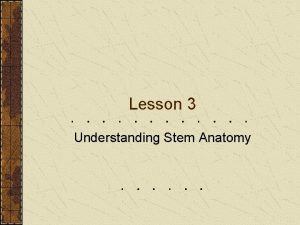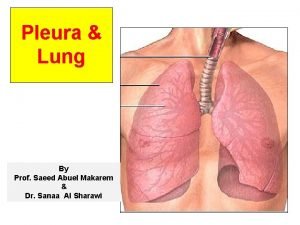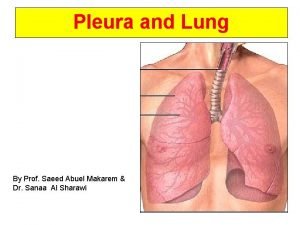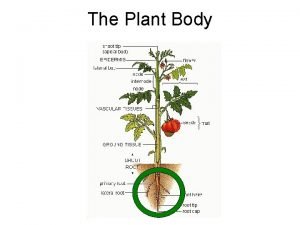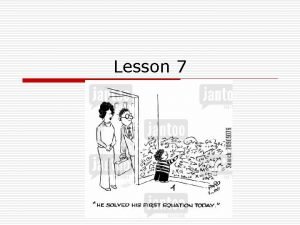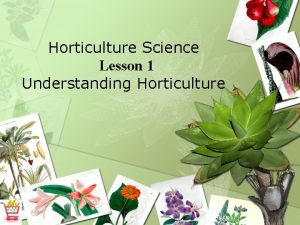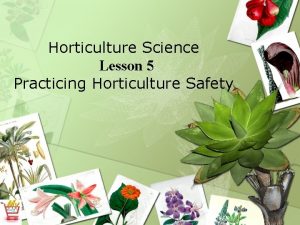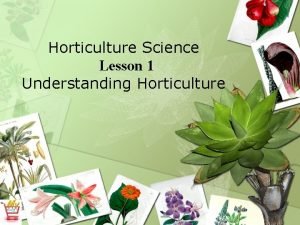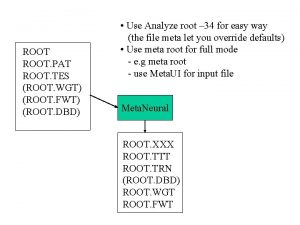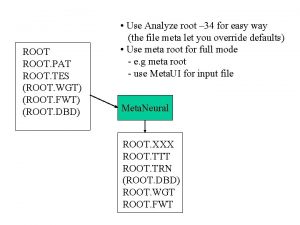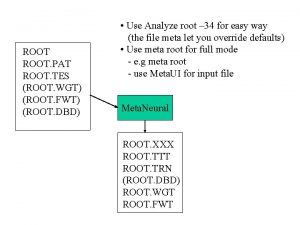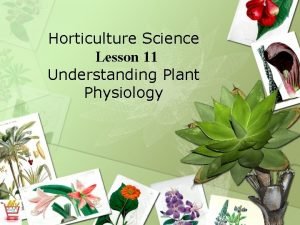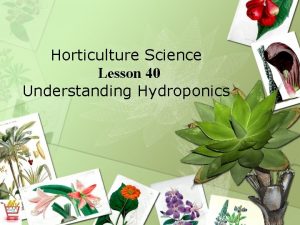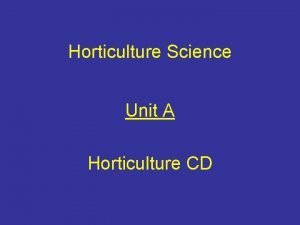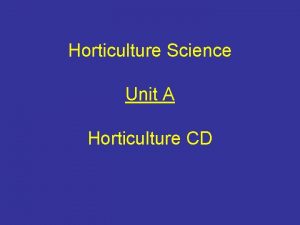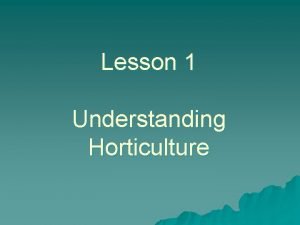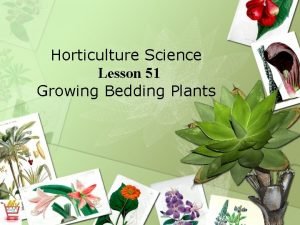Horticulture Science Lesson 7 Understanding Root Anatomy Interest





















- Slides: 21

Horticulture Science Lesson 7 Understanding Root Anatomy

Interest Approach Begin the lesson by knocking a plant that has been growing for several weeks in a small container (and is rootbound) out of its pot. Students love to see and perform this simple act. Ask students to make observations about what they see with the naked eye.

Interest Approach Start a discussion by asking questions such as: How is the soil being held in place? What can you see in the soil and on the roots? If you have enough plants, break the students into groups and give each group a plant to knock out and observe. Use hand lenses or stereoscopic microscopes to observe roots closely. You may ask students to draw a picture of what they see. Ask students why the roots are so hairy.

Student Learning Objectives • Examine the functions of roots in plants. • Identify the parts of a root. • Differentiate the two major types of root systems. • Evaluate the health of a root system.

Terms • aeration • apical meristem • available water • epidermis • fibrous root system • napiform root • primary root

Terms • • root cap root hairs roots secondary roots taproot system unavailable water-holding capacity

What are the functions of a plant’s roots? • A plant’s health is very closely tied to its roots. • Root health is often closely linked to good soil aeration, which is the exchange of gases in the medium. • A high percentage of pores in soil provides good aeration. • When roots are weak or diseased, the whole plant has difficulties.

What are the functions of a plant’s roots? • The roots need to be constantly growing in order to stay healthy. • This is one reason that a plant growing in one pot for a long time tends to become root bound.

What are the functions of a plant’s roots? • Soil moisture plays a significant role in helping or hurting the root systems and involves the following: – Available water is water that can be absorbed by the plant roots. – Unavailable water is a thin film of water that binds so tightly to the medium’s particles that it cannot be used by the plants. – Water-holding capacity refers to the ability of soils to hold water. Sandy soils have low water-holding capacity, and clay soils have high water-holding capacity.

What are the functions of a plant’s roots? • The roots anchor the plant to the ground and support the above ground part of the plant. • The roots store food that has been made through photosynthesis. • This food can be used later when a plant needs it to grow or survive.

What are the parts of a root? • When a plant seed germinates, the first structure to emerge from the seed is a root. • This root becomes the primary root and on some plants the most important root in the whole root system.

What are the parts of a root? • Other roots eventually branch out from the primary root. • These are called secondary roots. • At the tip of the root, there is an area where new cells develop, which is called the apical meristem. • The apical meristem is easily damaged and so it has a root cap over the top to protect it from damage as it grows through the large and sometimes coarse soil particles.

What are the parts of a root? • The surface of the root is covered with a skin of cells called the epidermis. • This epidermis is where the water and minerals enter the root through osmosis and diffusion. • The larger the surface area of the epidermis, the better able the plant is to bring in water and minerals.

What are the parts of a root? • The epidermis cells begin to elongate and grow hair-like projections. • These projections, called root hairs, greatly increase the surface area of the root and allow much more water and minerals to enter the plant.

What are the two types of root systems? • Plant root systems are organized in two basic ways; both have a lot to do with primary and secondary roots. • A root system that is composed of one main primary root and many secondary roots branching off of the primary root is called a taproot system. – Many dicot plants have taproot systems. – A specialized type of taproot is called a napiform root. • Examples of napiform roots include radishes, beets, and carrots.

What are the two types of root systems? • A system that has no dominant primary root but is made of many primary and secondary roots of similar size is called a fibrous root system. • Monocot plants typically have fibrous root systems.

What are the two types of root systems?

What does a healthy root system look like? • A healthy root system is white or nearly white in color and smells fresh. • If roots are black, brown, or dark orange and smell rotten or sour, the root system is having some problems. • Although a plant growing outside has a majority of roots in only the top two feet of soil, a plant in a pot should have its roots evenly dispersed throughout the soil in the pot.

What does a healthy root system look like? • Watering a plant properly is one of the most important ways to keep the root system healthy. • Proper watering for most plants involves growing the plants in pots with proper drainage holes in the bottom of the pot. • The pot is soaked with water until it is dripping out of the drainage holes. • This encourages roots to grow through the entire pot.

What does a healthy root system look like? • The plant’s soil is usually allowed to dry slightly before watering again. • If plants have adequate drainage, overwatering of plants is not a matter of how much water, but of how often watering occurs.

Review/Summary • What are the functions of a plant’s roots? • What are the parts of a root? • What are the two types of root systems? • What does a healthy root system look like?
 Lesson 1 understanding science answer key
Lesson 1 understanding science answer key Lesson 2 measurement and scientific tools answer key
Lesson 2 measurement and scientific tools answer key Lesson 2 measurement and scientific tools
Lesson 2 measurement and scientific tools International society horticultural science
International society horticultural science International society of horticultural science
International society of horticultural science Nominal v. real interest rates
Nominal v. real interest rates Nominal rate
Nominal rate Simple interest and compound interest
Simple interest and compound interest Economics … my favorite subject at school
Economics … my favorite subject at school Understanding stem anatomy
Understanding stem anatomy Function of stem in plants
Function of stem in plants Lung fissures surface anatomy
Lung fissures surface anatomy Root of lung
Root of lung Visceral pleura
Visceral pleura Calat prefix anatomy
Calat prefix anatomy Propagative roots functions
Propagative roots functions Chapter 9 lesson 3 understanding violence
Chapter 9 lesson 3 understanding violence Chapter 23 communicable diseases
Chapter 23 communicable diseases Writing literal equations
Writing literal equations Chapter 4 lesson 1 understanding stress
Chapter 4 lesson 1 understanding stress Chapter 1 lesson 4 promoting health and wellness
Chapter 1 lesson 4 promoting health and wellness Chapter 1 lesson 2 what affects your health
Chapter 1 lesson 2 what affects your health









